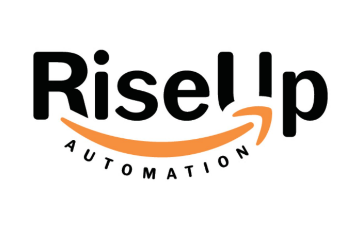In today’s rapidly advancing technological landscape, automation has become a central force reshaping industries worldwide. From manufacturing to healthcare, logistics to customer service, the integration of automated systems is driving innovation and efficiency like never before. But what does this Rise Up Automation mean for businesses, workers, and the global economy?
The Surge in Automation Adoption
Automation is no longer just a buzzword; it’s a transformative trend that has already revolutionized sectors such as manufacturing. In fact, the global market for industrial automation is expected to grow significantly over the next decade, with predictions pointing to a compound annual growth rate (CAGR) of over 9% between 2023 and 2030. This growth can be attributed to a combination of factors: technological advancements, the need for cost-cutting solutions, and the desire for higher precision and efficiency.
The rise of artificial intelligence (AI), machine learning (ML), and robotic process automation (RPA) are among the driving forces behind this surge. These technologies enable businesses to perform repetitive tasks with higher speed and accuracy, drastically reducing human error while allowing employees to focus on more complex and value-driven work.
Automation in Various Sectors
The application of automation spans across nearly every industry. In manufacturing, robotic arms and AI systems streamline production lines, boosting output and lowering production costs. In logistics, automated warehouses and delivery systems have become more commonplace, allowing companies to process orders faster and more accurately.
The healthcare sector is also experiencing a shift towards automation, particularly in diagnostics, data management, and robotic surgeries. Automation in hospitals can not only improve patient care but also alleviate the strain on healthcare workers, helping them focus on patient interactions rather than administrative tasks.
In the service industry, customer support is being enhanced with chatbots and virtual assistants. These AI-powered tools can handle customer inquiries, provide assistance, and even resolve issues without human intervention, leading to improved customer satisfaction and reduced operational costs for companies.
Implications for the Workforce
While automation offers significant benefits, it also raises concerns about job displacement. As machines become capable of performing tasks traditionally carried out by humans, many fear that automation will lead to widespread unemployment. However, experts suggest that while some jobs may be replaced, automation also creates new roles, especially in fields like robotics maintenance, software development, and data analysis. The key is reskilling the workforce to adapt to this new era of technology.
Moreover, automation can improve working conditions by eliminating hazardous tasks and reducing physical strain on workers. By automating routine and repetitive work, businesses can enhance employee well-being and satisfaction, offering more fulfilling job opportunities.
The Future of Automation
As automation technologies continue to evolve, they are likely to become more affordable and accessible, further accelerating adoption across small and medium-sized enterprises (SMEs). In the near future, we can expect automation to become even more integrated into everyday life, from autonomous vehicles to fully automated smart homes.
In conclusion, the rise of Rise Up Automation presents both challenges and opportunities. By embracing these technologies and focusing on reskilling and innovation, businesses and workers alike can position themselves for success in this ever-evolving digital landscape. As automation continues to advance, it will undoubtedly play a critical role in shaping the industries and economies of tomorrow.
